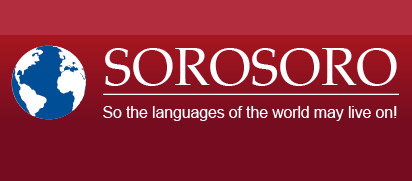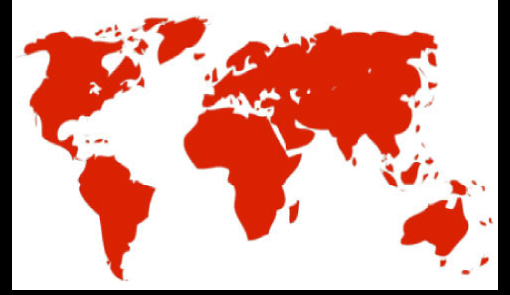Print  |
|


Weekdays
It is interesting to compare languages through their use of daily words and expressions which are (too often !) held as universal. Our shooting teams were requested to gather names of colours, numbers from 1 to 10 (although we know all populations do not necessarily use the same counting systems) as well as daily phrases from all their interlocutors in their respective languages.
These basic words often prove to be an efficient way of verifying similarities between languages belonging to the same linguistic group. In indo-european languages, for example, numbers from 1 to 10 are very similar which confirms connections between, among others, Kurd, French or Russian.
Weekdays in Benga
In Gabon, Benga is spoken on the coastal zone (Cap Esterias and Cap Santa Clara), north of Libreville.
Nowadays less that 1000 people are able to use this language, and the number of Benga speakers is constantly dropping, partly because they are progressively blending into the neighbouring Myene community.
Linguist : Patrick Mouguiama-Daouda
Image and sound : Muriel Lutz
Editing: Caroline Laurent
Weekdays in Mpongwe
Following the Akoa Pygmies, nowadays extinct, the Mpongwe people are the first inhabitants of Libreville, on the north bank of the Gabon estuary. The number of Mpongwe speakers has now dropped under 5000. In awareness of their traditional heritage being threatened with extinction, the Mpongwe have created structures for the protection of their language and culture.
Linguist : Patrick Mouguiama-Daouda
Image and sound: Muriel Lutz
Editing: Caroline Laurent
Weekdays in Baynunk
The Baynunk language belongs to the big Niger-Congo family (North Atlantic branch, Tenda-nyun group). It is spoken in south Senegal, as well as in neighbouring Gambia and Guinea-Bissau.
In 2006 website Ethnologue.com estimated the number of speakers of Baynunk at 6,200. According to UNESCO criteria, it thus qualifies to be considered as an endangered language.
Baynunk is one of the 17 languages benefiting from the codification and recognition program for minority languages initiated in the 1970’s in Senegal.
Image & sound: Muriel Lutz, assisted by Cheikh Tidiane Sall
Linguist: Sokhna Bao-Diop
Editing: Caroline Laurent
Video created within the ANR Sénélangues project
Weekdays in Syriac
Syriac is a classical and liturgical belonging to the Aramaic group of languages. These derive from Aramaic, a Semitic language that was officially recognized over 2,500 years ago! Aramaic became the administrative language of the Neo-Assyrian Empire in the 7th century B.C., followed by the Neo-Babylonian and Persian Empires, thus becoming the common language of the Middle East. Aramaic already included several dialects prior to the Christian era. And one of these was the language Jesus Christ used to preach in.
Read our description sheet on Neo-Aramaic languages (French)
View all videos in Neo-Aramaic languages
Image & sound: Baptiste Etchegaray
Editing: Caroline Laurent
Weekdays in Tamasheq
Tamasheq (or Tamajeq, or Tamaheq, stemming from the word Tamazight) is spoken by the Tuareg, a nomadic people that has been settled in the desert areas of North Africa for millennia, over a vast territory reaching from Mali to Libya, from Burkina Faso to Algeria, and including Niger. There are around one million speakers of Tamasheq.
Like Kabyle, Shawia, or Rifian, Tamasheq is in fact a variant of Berber (or Tamazight), a group of languages that covers the whole of North Africa (Marocco, Algeria, Tunisia, Libya, Egypt, Niger, Mauritania, Mali, and Burkina Faso), not to mention a large diaspora in Europe and America.
Watch all the videos in Tamasheq
Image & sound : Arnaud Contreras
Language advice : Salem Mezhoud and Abdoulahi Attayoub
Editing : Caroline Laurent
Weekdays in Menik
Menik is a Niger-Congo language (North Atlantic branch, West Atlantic group, Tenda subgroup). It separates into three dialects: Banapas, Biwol and Bëñolo. The filming took place in Bandafassi, area of Kedougou, in Banapas dialect.
With a few thousand speakers at the most, Menik can clearly be considered as endangered on a relatively short term. However, it is observed that the language is still being handed down to the young generations despite the fact that a majority of people in these villages speaks fluent Fula and French, used daily. Speakers of Menik, although perfectly accustomed to the environing culture and having a great sense of adaptability to the languages they’re in contact with, are linked with a strong feeling of identity thus protecting their language to a certain extent.
Access description sheet on Menik
Linguist: Adjaratou Oumar Sall
Image & sound: Muriel Lutz assisted by Cheikh Tidiane Sall
Translation: Marcel Camara
Editing: Caroline Laurent
Video created within the ANR Sénélangues project








